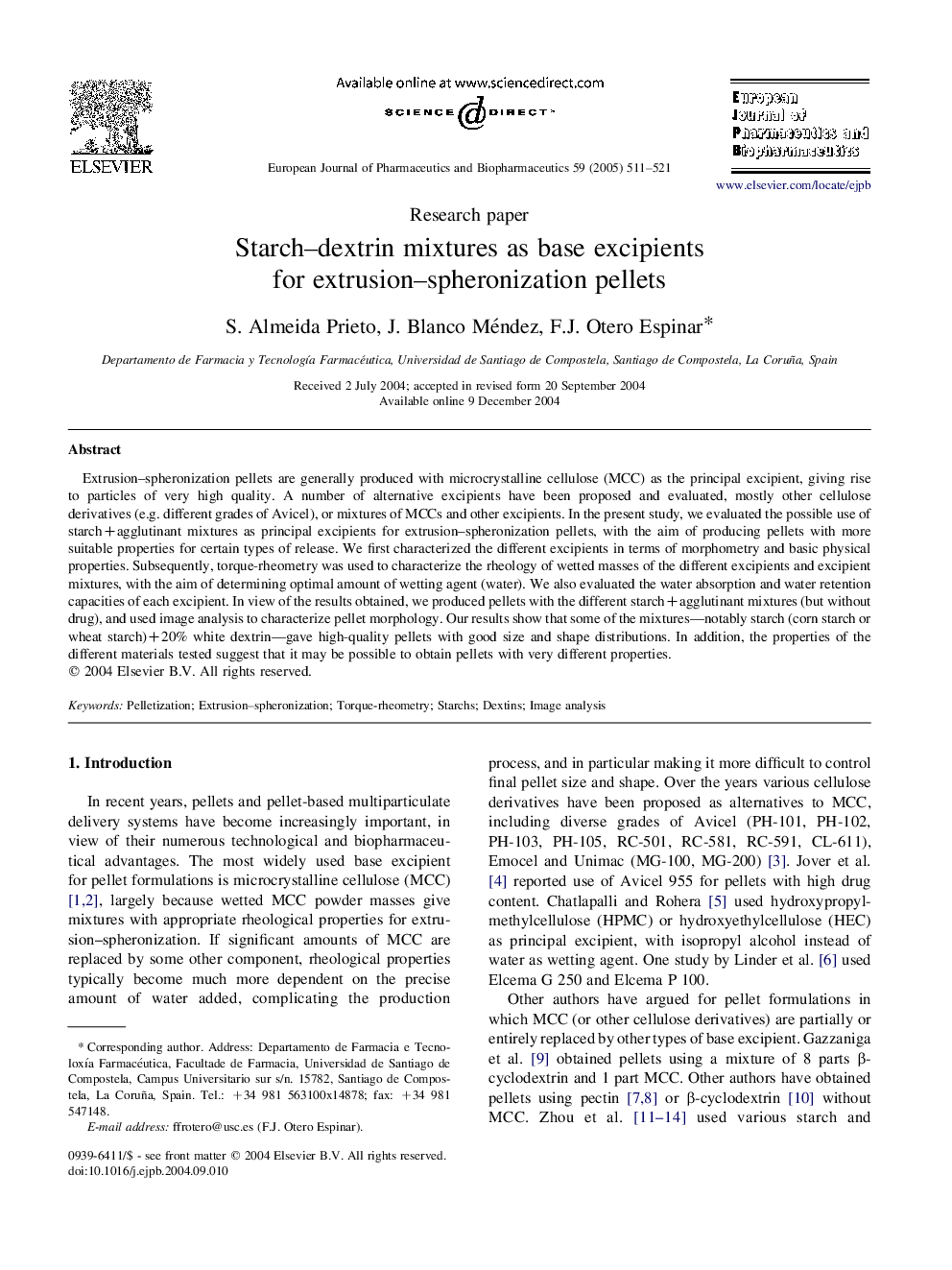| Article ID | Journal | Published Year | Pages | File Type |
|---|---|---|---|---|
| 9901517 | European Journal of Pharmaceutics and Biopharmaceutics | 2005 | 11 Pages |
Abstract
Extrusion-spheronization pellets are generally produced with microcrystalline cellulose (MCC) as the principal excipient, giving rise to particles of very high quality. A number of alternative excipients have been proposed and evaluated, mostly other cellulose derivatives (e.g. different grades of Avicel), or mixtures of MCCs and other excipients. In the present study, we evaluated the possible use of starch+agglutinant mixtures as principal excipients for extrusion-spheronization pellets, with the aim of producing pellets with more suitable properties for certain types of release. We first characterized the different excipients in terms of morphometry and basic physical properties. Subsequently, torque-rheometry was used to characterize the rheology of wetted masses of the different excipients and excipient mixtures, with the aim of determining optimal amount of wetting agent (water). We also evaluated the water absorption and water retention capacities of each excipient. In view of the results obtained, we produced pellets with the different starch+agglutinant mixtures (but without drug), and used image analysis to characterize pellet morphology. Our results show that some of the mixtures-notably starch (corn starch or wheat starch)+20% white dextrin-gave high-quality pellets with good size and shape distributions. In addition, the properties of the different materials tested suggest that it may be possible to obtain pellets with very different properties.
Related Topics
Life Sciences
Biochemistry, Genetics and Molecular Biology
Biotechnology
Authors
S. Almeida Prieto, J. Blanco Méndez, F.J. Otero Espinar,
